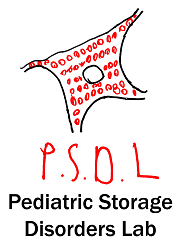
Jonathan Cooper, PhD
Professor, WashU Pediatrics
- Phone: 314-273-9066
- Email: cooperjd@nospam.wustl.edu
Pathogenesis and Experimental Therapies for Lysosomal Storage Disorders

For the last 20 years, work in my Pediatric Storage Disorders Laboratory (PSDL) has focused upon investigating the pathogenesis of the neuronal ceroid lipofuscinoses (NCLs, or Batten disease), and other similar neurodegenerative lysosomal storage disorders. We have unbiased stereology to characterize multiple mouse and larger animal models NCL, and have used this information in order to be able to target a range of different pre-clinical interventions to where they can be most effective. This work has led to several clinical trials and an approved treatment for CLN2 disease.
We have mapped the onset and progression of neuron loss along interconnected pathways in multiple forms, of NCLs revealing the vulnerability of thalamocortical system, and GABAergic neurons. This has given us pathological landmarks for judging therapeutic efficacy, that we use in combination with behavioral analyses. We have recently found a pathological involvement of the spinal cord, as structure that was previously thought to be unaffected. This has allowed us to improve the efficacy of gene therapy for Cln1 disease, by simultaneously treating the brain and spinal cord. We are now extending this work to target newly identified sites of pathology in the peripheral autonomic and enteric nervous system. We are now actively characterizing a novel CRISPR/Cas9 generated sheep model of CLN1 disease, and will address how to scale up the delivery and dosing of therapies in such larger animal models.
We have also been working to understand the selective nature of neuron loss in the NCLs and what might influence this. One key influence appears to be the localized activation of astrocytes and microglia, which occurs where most neurons subsequently dies. Our tissue work has recently provided evidence that glia are not only dysfunctional, but directly compromise neuron health. The mechanisms by which this occurs appear to differ between the NCLs, highlighting that while different forms of NCL share broad pathological similarities they differ fundamentally in many respects.
More about the Jonathan Cooper